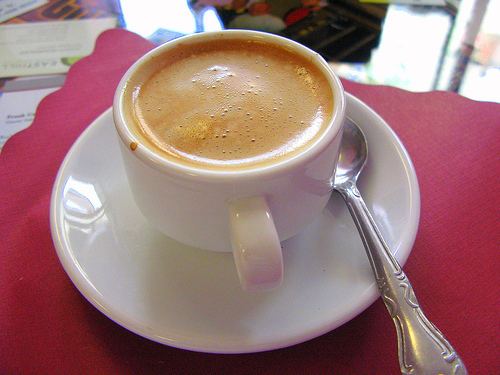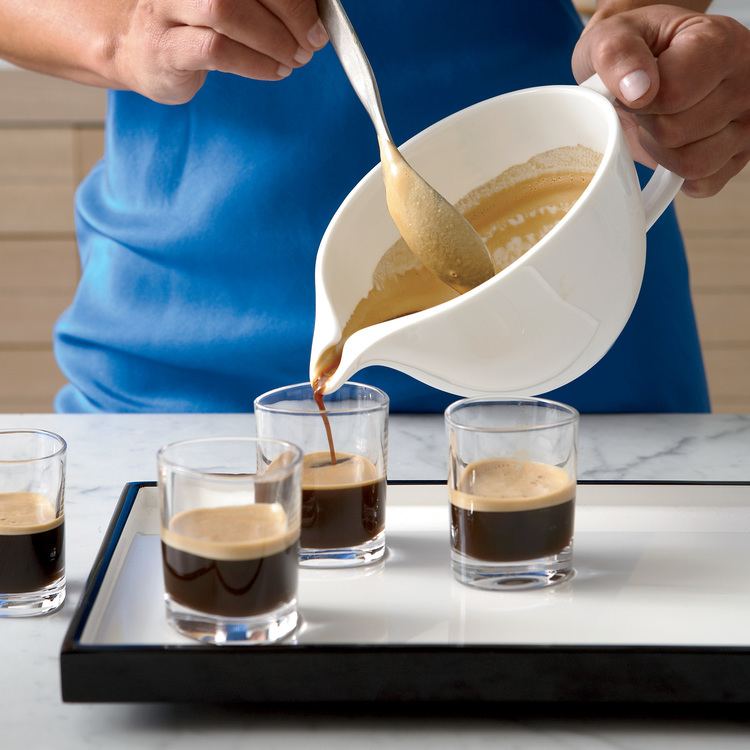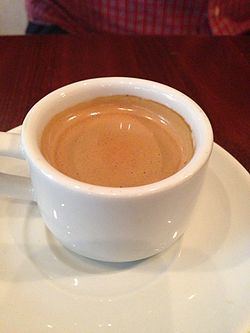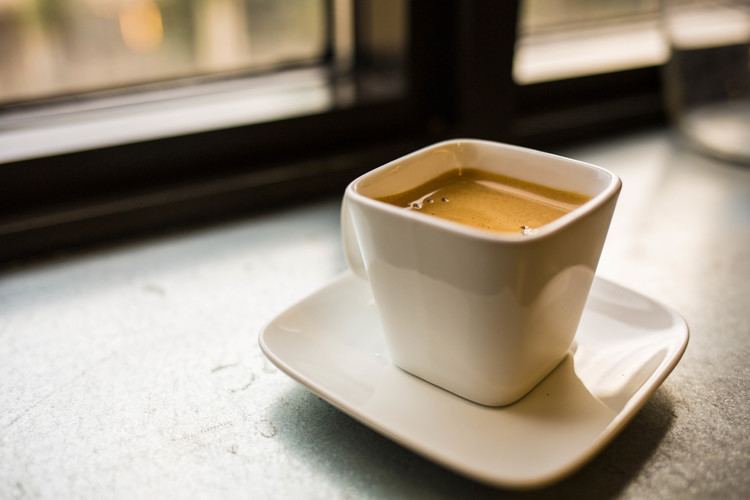Type Beverage Main ingredients Espresso, Brown sugar | ||
 | ||
Similar Espresso, Café con leche, Cuban sandwich, Cortado, Cuban cuisine | ||
Café Cubano (also known as Cuban coffee, Cuban espresso, cafecito, Cuban pull, Cuban shot) is a type of espresso that originated in Cuba after espresso machines were first imported there from Italy. Specifically, it refers to an espresso shot which is sweetened with demerara sugar as it is being brewed, but the name covers other drinks that use Cuban espresso as their base.
Contents

Drinking café cubano remains a prominent social and cultural activity in Cuba and Florida, especially in the regions surrounding Miami, Tampa, the Florida Keys, as well as in other Cuban American communities like Havana on the Hudson. Café Cubano is available in almost all coffee shops in the Miami Metropolitan Area and Tampa, making it a traditional staple of regional cuisine.

Preparation

Traditional Cuban-style espresso is made using the darker roasts, typically either Italian or Spanish roasts. It is identical to Italian pulls, except for the addition of sugar directly to the espresso pitcher. The heat from the coffee-making process will hydrolyze some of the sucrose, thereby creating a sweeter and slightly more viscous result than a normal pull or adding sugar at the table.

A Cafe Cubano is regarded as a mid-afternoon standard. Cafe con Leche "Lattes" or the smaller version, Cortaditos [cortados] are seen as either desserts, breakfast or late night fare. Espresso is customarily served alongside a small glass of water. Cigars are another favored accompaniment with Cuban-style espresso.
Alternative or household methods
A common household method used in order to simulate the crema on a stove-top moka pot is to initially add just the first few drops of espresso to the sugar and mix vigorously. This results in a creamy, light brown paste. The remaining espresso is then added to this paste and mixed, creating a light brown foam layer, or espumita, atop the coffee.
Variations
Cortadito is a standard espresso shot topped off with steamed milk. The ratio can be between 50/50 and 75/25 espresso and milk. It is similar to a cortado served in other Latin countries, but pre-sweetened.
Café con leche, or "coffee with milk", is an espresso (without sugar) served alongside a cup of hot or steamed milk. Traditionally served separate from the coffee, the espresso is poured to the desired darkness into the cup of hot milk and then stirred. It is the traditional Cuban breakfast beverage, served with slices of buttered, toasted cuban bread.
Colada is 3–6 shots of Cuban-style espresso served in a Styrofoam cup along with small, plastic demitasses. It is a takeaway form, meant to be shared. This is customary of workplace breaks in Cuban communities.
